Personal
My apologies for the lack of posts over the past few weeks. I’ve been working feverishly to complete the revisions for my biography of Robert Gould Shaw. I am planning to submit the revised manuscript on Monday. It’s been nice having this as a distraction as I haven’t had the time to doom scroll through my social media feeds in anticipation of Tuesday’s election.
News
Today my wife and I spent a little time out in Concord, MA. The town’s Civil War monument now features a new updated plague that includes George W. Dugan, who served in the 54th Massachusetts Volunteer Infantry.
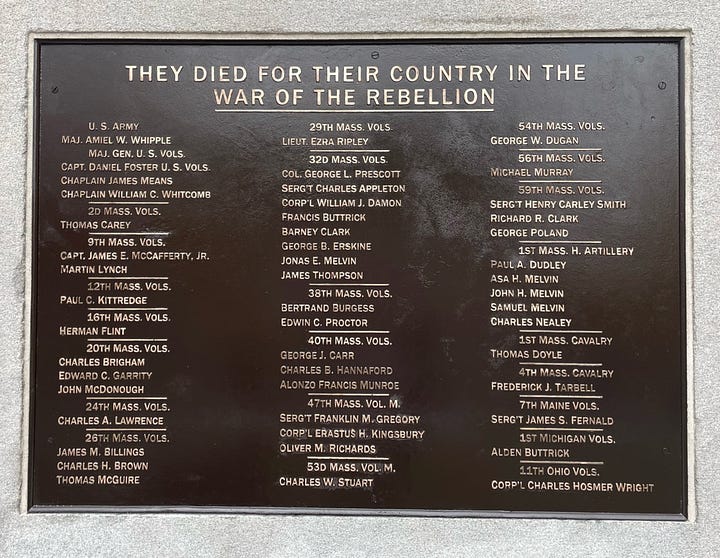
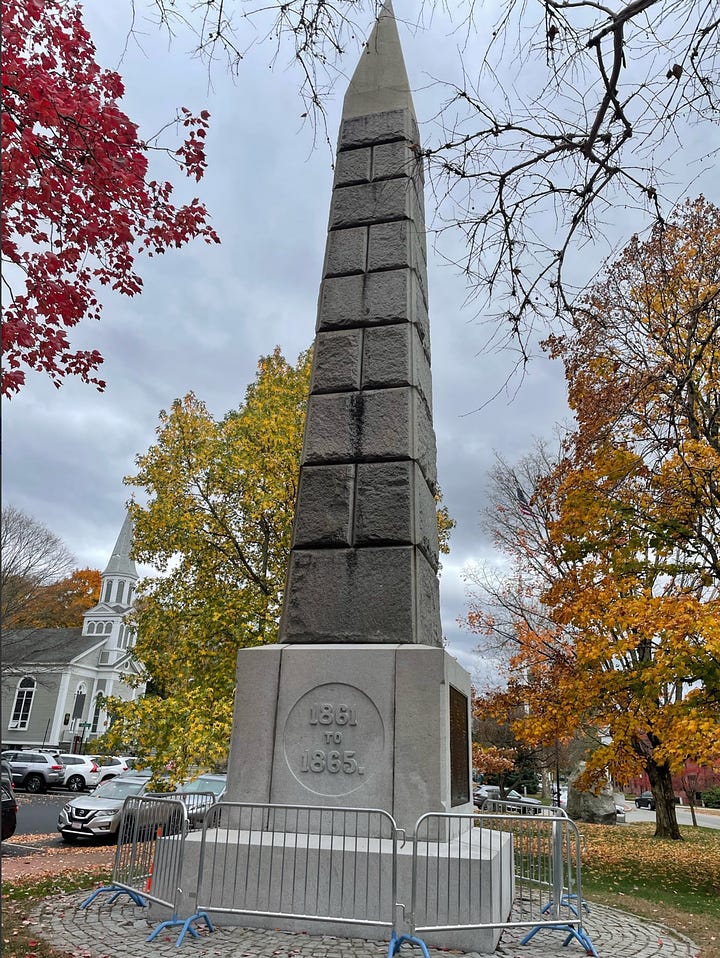
Before my friend and fellow historian Peter Carmichael passed aways this past July he was able to secure a number of volumes from Tony Horwitz’s personal library for Gettysburg College. As many of you know, the author of Confederates in the Attic and many other books unexpectedly passed away in 2019. The legacy of both will live on at the school.
The Macon-Bibb commission in Macon, Georgia has rejected an offer from the local UDC to dedicate a plaque in a Confederate cemetery to honor Charley Benger, who they claim as a “Black Confederate soldier.” This is great news since Benger was not a soldier. Neither side in this debate appears to understand the relevant history. One of the commissioners, who rejected the plaque had this to say: “My purpose of voting [no] is it's donated by the United Daughter of the Confederacy for a Confederate soldier. I just don't think that's appropriate. They were traitors.”
The Antietam National Battlefield has long needed a new introductory movie for its visitors. The old one was woefully out of date. Thankfully, a new will premiere at the park on November 11. Check out the trailer.
The National Park Service has added 14 new sites to its National Underground Railroad Network to Freedom Program. This is great news.
What did the calendar from the magazine The Crisis look like in November 1912? Thanks to historian Stephen West for posting this on Bluesky.
After nearly 20 years, the Civil War museum in Fort Worth, Texas has finally closed its doors. The museum has been in financial trouble for quite some time, but there closure has as much to do with a problematic exhibit that, for one, does not deal at all with the subject of slavery.
As if the racist and xenophobic comments spoken at Donald Trump’s recent rally in Madison Square Garden weren’t enough, organizers also played the song “Dixie.” I can’t think of a more fitting anthem for that crowd.
I always preferred the Union version:
Away down south in the land of traitors,
Rattlesnakes and alligators,
Ride away, ride away, ride away, ride away.
Where cotton's king and men are chattels,
Union boys will win the battles,
Ride away, ride away, ride away, ride away.
Here is an encouraging story about two kids who procured a headstone for a Union soldier in Albion, New York.
Sometime in the spring, the teens said they’ll hold a dedication ceremony in Walterhouse’s memory, with help from their teacher. Because they don’t know exactly where Walterhouse is buried, they’ll select a place for the tombstone near other markers on the half-acre spot.
Good work.
This is a great piece about Stephen Hammond, a descendant of the Syphax family, who were enslaved on the grounds of Arlington House/Arlington National Cemetery and now volunteers to share the story of the enslaved with visitors. I had a chance to spend some time with Mr. Hammond last year at Arlington. He’s a great asset to have on site.
Finally, I know many students of the 1862 Peninsula Campaign have long awaited Bobby Krick’s study of the battle of Gaines’s Mill. Well, it looks like it will soon be published first in partnership with the American Battlefield Trust, which is attempting to preserve part of the battlefield.
Books
Jonathan Gienapp, Against Constitutional Originalism: A Historical Critique (Yale University Press, 2024).
Richard Kreitner, Fear No Pharaoh: Amerian Jews, the Civil War and the Fight to End Slavery (FSG, April 2025). [Publisher sent me the advance proofs.]
Bennett Parten, Somewhere Toward Freedom: Sherman’s March and the Story of America’s Largest Emancipation (Simon and Schuster, January 2025). [Publisher sent me the advance proofs and I have already had a chance to read it. This is a fabulous book.]
Nathan Perl-Rosenthal, The Age of Revolutions and the Generations Who Made It (Basic Books, 2024).
Videos
Thanks to the Adams County Historical Society for recently making this video of Peter Carmichael available. In this presentation Pete discusses Civil War soldiers and the challenges surrounding how historians understand trauma in the nineteenth century. He’s at the top of his game here.
Here is another “Step Into History” episode from the American Battlefield Trust. In this episode Anthony Trusso and Garry explores one of the best known photographs of Sudley Springs Ford on the Manassas battlefield. I really love this series.
Here is another episode of Ron Coddington’s “Life on the Civil War Research Trail.” Amputations resulting from wounds proved risky. For example, in the Union Army, one of every five men who suffered the loss of their lower arm did not survive. One of those who survived, 1st Lt. Jacob Thompson Zug of the 36th Pennsylvania Infantry, received his wound during a charge at Fredericksburg.
Here is a documentary from 1987 on Civil War battlefields. It’s a very outdated interpretation, but it is a great time capsule if you were a Civil War reenactor back in the day.
Otis
The leaves have fallen and Otis couldn’t be happier.
We tried to dress him up as a sheriff with a hat, scarf, and spurs, but it didn’t quite work out.




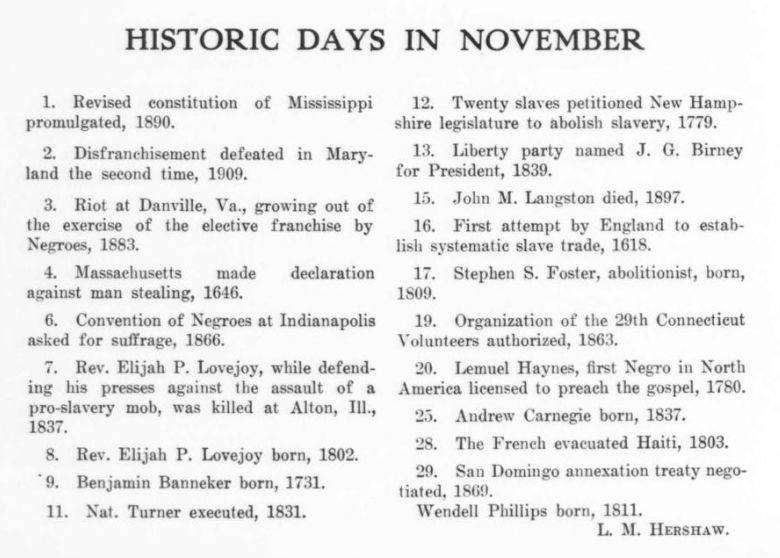
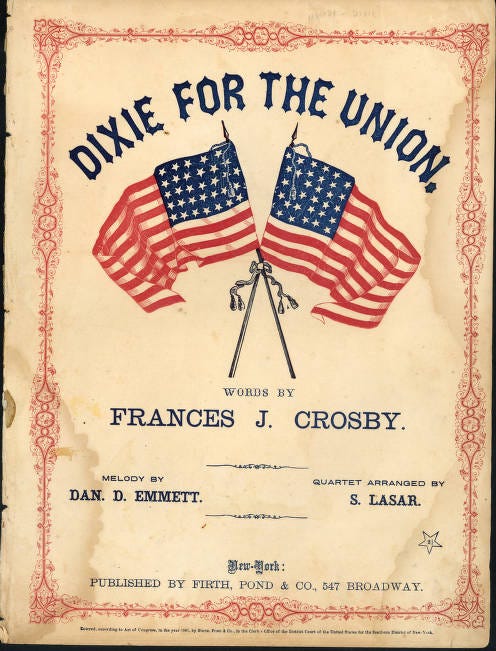
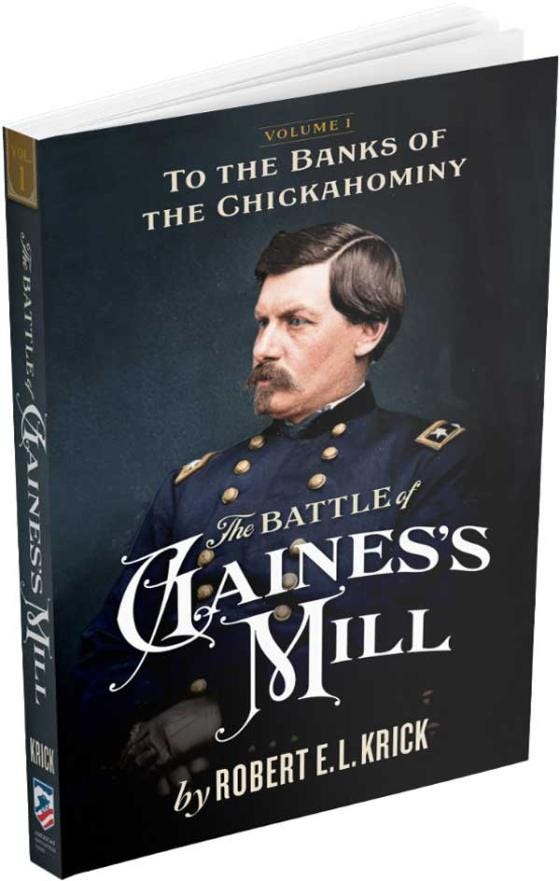


Otis doesn't need any stinking badges 😉
Love the Otis pics---keep them coming!